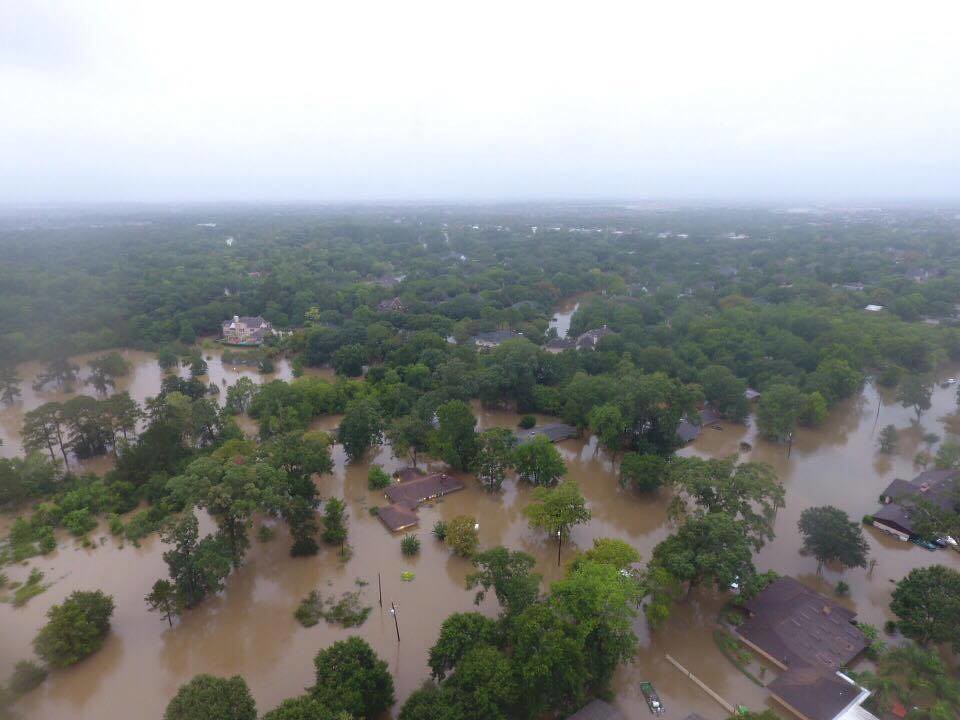Once the dust settles and the water recedes...next steps!

Hurricane Harvey left massive amounts of flooding and destruction across the Texas gulf coast. Many thousands of homes were saturated with flood waters. Once the initial shock wears off, it will be time to go into recovery and repair mode.
You should have already contacted family members and friends to ensure their safety. Then the insurance companies. Then file a claim on the FEMA website.
When the waters receed, and you are able to gain access to your home and assess the damages, make sure to take many many photos and videos. This will be required for insurance. Try to document clearly where the water line was both inside the home and outside the home. Bring a tape measure.
Did I say take photos? Take more photos!
Contact your insurance agent/claims adjuster again. They will typically approve a certain level of sheetrock removal. 4 feet is standard if there was less than 3 feet of water in the home. Again, take lots of photos and videos!
Make sure to take photos of appliances, electronics as well as their serial numbers.
Take photos!
With any luck, clean up crews, neighbors, and friends will show up to begin helping. Make sure that face masks are being worn when the sheet rock removal begins. Do not try to salvage any upholstered furniture. Remove everything from the home that was wet. All of it! Make a pile at the road. Citys will begin sending large trucks for trash removal. Try to bag small items in contractor/heavy duty trash bags.
Take photos!
If you plan to save anything non porous like plastic, it will need to be thourougly sanitized. Flood water contains many pollutants, harmful bacteria, even raw sewage. If you have an open wound, the chance of a serious infection is high if it comes into contact with this water. Take precautions with your health and safety. Wear gloves and closed toed shoes.
Take photos!
Once all belongings are removed from the home and all wet doors, sheetrock, flooring, baseboards and insualtion are removed, mop all remaining flooring/subflooring with a half diloution of bleach and water. Clean studs with the same mixture. Once surfaces touched by water have been cleaned. Run fans and dehumidifiers. If there is air conditioning, run this to keep mold and mildew at bay. Once dried, the next step is mold control. There are many moldicide/fungicide chemicals available at hardware stores. Concrobium Mold Control is a product that kills mold and prevents it from growing. It is versatile in that it can be used as a mopping solution for floors, sprayed in a sprayer or bottle on the studs and it can also be used as a fogger throughout the home.
Take photos onces the clean out is finished.
Depending on the saturation level, the home may need to remain in this "open wall" state for a month. It may take a month for the insurance adjuster to see the home before you are able to finish the work as well. You will need to check with your city to find out the process for permiting as well. During the reconstruction process, it may be possible that licenced contactors or electricians will need to come out (especially if water made it as high as the outlets/sockets).
Caveat emptor...buyer beware. Without a doubt, you can expect unscroupoulous people to show up in Houston. Never pay "contractors" who show up at your door offering to take care of work for you. They will ask for a large chunk of money upfront and may even have some paperwork/contract documents. Sure, you could attempt to sue them if things go bad...but often times these people are not even from Texas and getting them to court will be next to impossible.
More on the reconstruction later...


